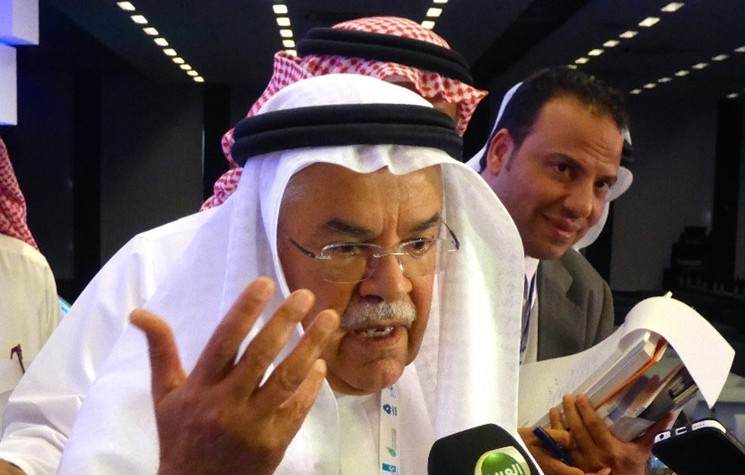Oil markets bracing themselves for worst case scenarios as Saudis reiterate they will not cut production

By Eithne Treanor
It was just a few short weeks ago when talk of oil below US$50 a barrel seemed a bit extreme and the investment bankers and the analysts had that low a price positioned in the worst-case scenario. But as we have seen in the past, on the up side and now on the down side, the market moves swiftly and in early trading on Friday, Brent crude was priced just above US$50 with WTI below US$49 a barrel.
In mid-week trading, Brent crude dipped below the almost acceptable psychological level of US$50 a barrel. This is the first time since May 2009 that we’ve seen such a low price. Key OPEC players in the Middle East have signaled their patience to wait until the market re-balances itself, but the big fear now, is how long that process might take.
There’s been no change in global demand growth and the quantity of non-OPEC production coming from the US and Russia and others has not slowed down.
In terms of price, “overshooting” is the new buzzword among analysts and investors, but the range the oil price can overshot is anything from 10 per cent to 30 per cent. There’s been no technical correction as the oil price continued its decline in recent months. Many are looking for a bottom to emerge in the near future, but few will predict where that bottom will be and how long the price might linger there.
The global research team at Bank of America Merrill Lynch issued a report this week expecting stronger growth due to the lower oil price. That might be the good news in the short term, but the bank remains cautiously optimistic in the longer term that the oil price will rebound from below US$50 a barrel back to US$80 a barrel.
The wider economic downside scenarios are not lost on the busy research team who caution where, “oil prices fail to rebound should result in a significant decline of corporate profits.” Stock markets around the world as well as major corporations are all scratching their heads, wondering where the oil price might go and what the collective impact will be on the corporate world, not just the big oil companies.
When looking at shale oil production in the US and Canada, the bank points out that not all fields are created equally. “We would expect a contraction of business investments, given that WTI breakeven for new oil sands project are generally in a US$55-US$105 a barrel range.” The research team is not as bullish as it was a few months ago and fears that the rebound may be slow.
“The market expects the WTI price to rebound to only US$63 a barrel by the end of 2016, which is very likely to cause a significant decline in capex investments if realized.” The latest rig-count in the US has fallen in recent months, according to Baker Hughes. The domestic rig count is now down by 87 land rigs for the last quarter. Looking further afield, Brazil’s Petrobras said the breakeven point for the subsalt oil fields is around US$45 a barrel until 2018.
In the meantime, uncertainty reigns; an uncomfortable position the market dislikes. One constant position appears to be that of Saudi Arabia, who this week reiterated its intention to leave production, at around 9.6 million barrels a day and the current pricing level to find its own equilibrium. A message from the King of Saudi Arabia, delivered by the Crown Prince this week made it clear there would be no cut in production.
The Kingdom has had to reduce the discount to Asian buyers this week, but it reduced its selling price to northern European buyers and cut its price of US bound Arab Medium blend to its lowest since December 2013. Oil inventories in the US are now about 15 per cent higher than last year.
Many oil producers will certainly feel the strain of low prices and governments have had to adjust their income statements in recent months. It’s estimated that the Gulf economies will be looking at an assumed average oil price of around US$60 a barrel this year for their budget calculations.
This will have a different impact on different economies with Iraq, Iran, Algeria and Libya suffering the most of the Gulf states and needing a minimum of US$100 a barrel to balance their budgets. OPEC countries outside the Middle East are certainly suffering with Angola and Nigeria murmuring about the situation, while Venezuela is calling for immediate action. The country’s President, Nicolas Maduro embarked on a Middle East tour in an effort to lobby support.
The daily volatility and uncertainty in the market will continue to dominate the headlines. Bank of America Merrill Lynch says the “bottom” may still be a few trading sessions away, fearing lows of US$40 for Brent crude with WTI breaching the US$36 a barrel level.
The oil market is back in contango for the first time since 2009, a situation where the price today is lower than the price in the future. One might think this would encourage traders to buy more oil. A report from KPMG says, “the widening contango we’ve seen over the last few weeks will benefit traders with access to storage facilities.”
This is certainly happening in many areas but the market remains oversupplied and there’s a possibility of a further fall, so many traders are sitting on the fence and others are holding out for better deals and hopefully better trading days to come on the market.
Comments (0)